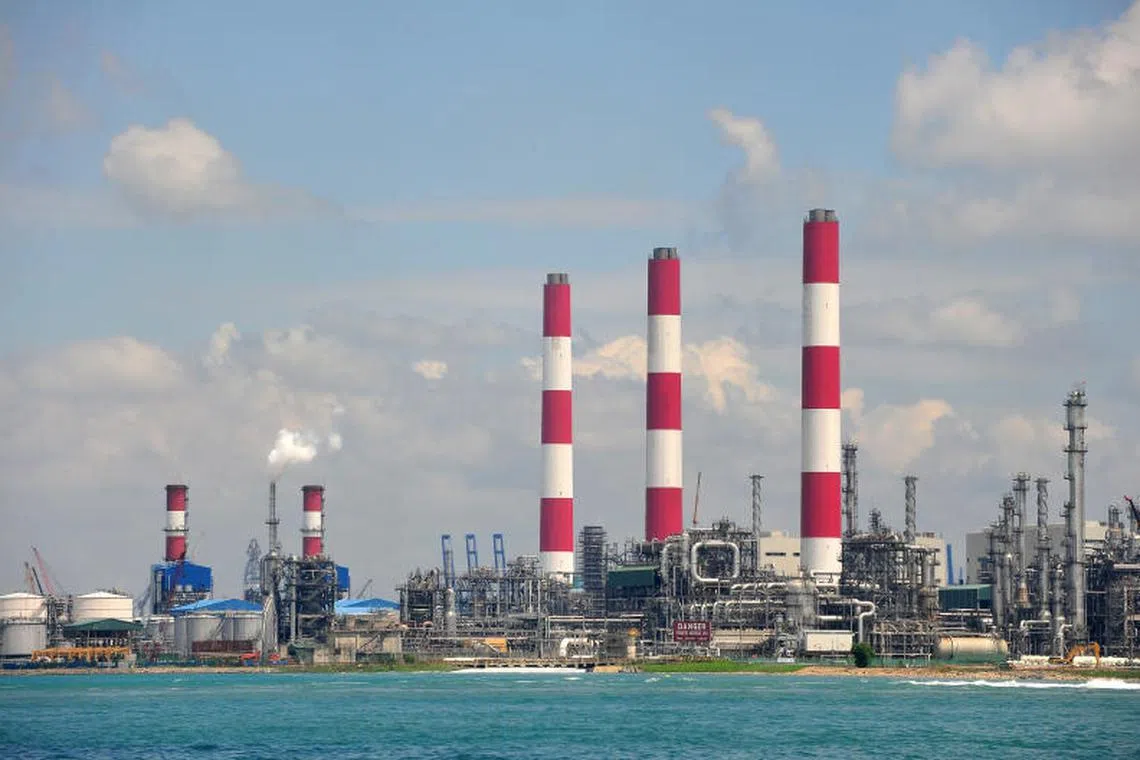Singapore’s new climate targets still ‘critically insufficient’, says research group
Sign up now: Get ST's newsletters delivered to your inbox

The critically insufficient rating is the worst of five ratings given.
PHOTO: ST FILE
Follow topic:
SINGAPORE - Singapore’s climate targets are “critically insufficient”, said a global climate research consortium, despite the Republic’s efforts to implement a higher carbon tax and cut its greenhouse gas emissions.
Singapore this year announced plans to reach net-zero emissions by 2050,
The Republic will also be raising its carbon tax
Despite these changes, Climate Action Tracker (CAT) still rated Singapore’s climate targets as critically insufficient – the same rating it gave to the country in September 2021, before the new targets were announced.
The critically insufficient rating is the worst of five ratings given. The other four are highly insufficient, insufficient, almost sufficient, and 1.5 deg C Paris Agreement compatible.
If all governments were to put forth their targets and policies which have been rated critically insufficient, warming would exceed 4 deg C by the end of the century, said CAT.
The 1.5 deg C cap on the rise in temperature would help countries avert the more catastrophic impacts of climate change. The world has already warmed by around 1.2 deg C since pre-industrial times.
CAT is a collaboration between two Germany-based research organisations: Climate Analytics and the NewClimate Institute.
It analyses the climate pledges of 39 countries and the European Union, covering the biggest emitters as well as a representative sample of smaller emitters, which together contribute about 85 per cent of global emissions.
Climate actions by Iran, Russia, Thailand, Turkey and Vietnam have been categorised as critically insufficient alongside Singapore, and none of the countries assessed have been rated 1.5 deg C Paris Agreement compatible.
In an assessment published on Nov 21, CAT said that while Singapore’s updated 2030 targets are stronger, they are only a “marginal improvement” over the last. The country’s emissions would still be far higher than what would be needed to keep global warming to 1.5 deg C.
CAT also noted that Singapore has brought forward its peak emissions year from 2030 to before 2030. Peak emissions year refers to the year when the country’s total emissions will start declining.
Minister for Sustainability and the Environment Grace Fu said in Parliament earlier in November that Singapore’s peak emissions would occur between 2025 and 2028.
As for Singapore’s long-term strategy to reach net-zero emissions by 2050, CAT said that the Republic does not “sufficiently provide” clear policy guidance on how the Government intends to reach net zero, and to what extent its policies and measures will contribute to the required emissions reductions.
However, the report acknowledged that Singapore has a small land area and high population density, with limited potential for renewable energy and an export-oriented economy that is largely dependent on the fossil fuel industry, such as oil refining.
Ms Fu said in Parliament last year that CAT’s assessment framework at the time did not account for Singapore’s “unique challenges as a small, densely populated city state with limited access to alternative energy sources”.
When asked about the new assessment given, a spokesman for Singapore’s National Climate Change Secretariat said it was “puzzling” that the enhanced targets and concrete plans have not translated to a better rating, and that it was seeking clarifications from CAT.
The spokesman also pointed out that CAT’s “fair share target” rating for Singapore may not have recognised the constraints that Singapore faces in transitioning to alternative energy sources.
The “fair share target” rating evaluates a government’s efforts in its targets or policies against what would be considered a fair share contribution to the global effort in reducing greenhouse gas emissions.
On its website, CAT noted that there are no agreed guidelines on what would constitute a fair level of contribution to the global effort of emissions reduction, beyond the general understanding that all countries have a common responsibility to address climate change based on their own capabilities.
However, a country’s responsibility differs according to its level of emissions, financial position and historical contribution to global warming.
Its assessment is based on a compilation of a wide range of literature – including more than 40 studies – on differing perspectives on what would be considered a “fair” contribution to greenhouse gas reduction.
CAT said that while the 2030 target will lead to lower emissions, it is still 87 per cent higher than its fair share contribution to reach the 1.5 deg C global target.
As for Singapore’s carbon tax rate, CAT noted that while there would be a gradual increase to $50 to $80 per tonne of CO2 in 2030, the carbon tax rate would be kept at $5 per tonne up till 2023, covering about 43 per cent of emissions by industries and the power sector.
This would be unlikely to generate the needed incentives for a large-scale switch to zero-carbon technologies in the medium term, it said.
However, the National Climate Change Secretariat said that the carbon tax currently covers 80 per cent of total greenhouse gas emissions, which includes the power, manufacturing, waste and water sectors.
It added that when accounting for fuel excise duties which would incentivise the reduction of transport emissions, the overall carbon tax coverage rises to above 90 per cent.
Noting that the Government’s plans to achieve net-zero emissions are largely dependent on carbon capture and storage technology, as well as low-carbon hydrogen, CAT said that the high share of natural gas in the Republic’s energy mix and the lack of proper policy planning to phase it out remain critical issues for Singapore’s energy transition.
About 95 per cent of Singapore’s electricity is generated from natural gas. However, given the importance of green hydrogen in helping the world cap warming to 1.5 deg C, coupled with Singapore’s strategic location, the country could potentially become a regional storage hub for the trading and transportation of green hydrogen, said CAT.


